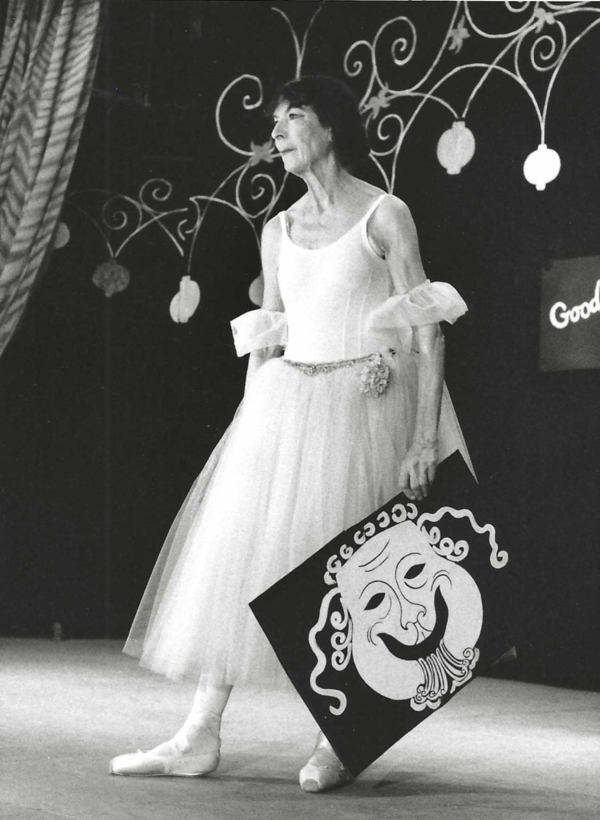The ballerina’s ashes have been scattered not to the wind but to the whirlwind, per her wishes, yet the royal couple in the center box of her theater still watches, attended by courtiers, nuns and monks in religious habit, ladies of the night, beaux on the prowl, and, in a sly anachronism, the once-almighty dance critic of The New York Times, Clive Barnes.
Of all the opera houses I know only from pictures, the one I most want to see with my own eyes is the one in Death Valley Junction, California, population reportedly four or fewer. It’s the creation of the New York native Marta Becket, a veteran of Radio City Music Hall and Broadway, who relocated there at 43 and soon started painting the murals with her own hand. That was so she’d always have an audience to dance for whether or not anyone else came. Todd Robinson’s documentary Amargosa, released in 2000, tells Becket’s story.
As in Becket’s lifetime, traffic through Death Valley on State Route 127 is never a whole lot heavier than on the country road in Samuel Beckett’s absurdist classic Waiting For Godot. Yet it sufficed to support her dreams for half a century. Her new life began in 1967, when she rolled into the local gas station with her husband and a flat tire. Waiting on a repair, she stumbled on a ruin and was hooked. She named her Amargosa Opera House after the only free-flowing river in that region of the Mojave Desert. Her husband, supportive at first, drifted away after a while, but Becket stayed, never missing a show. She died in 2017 at age 92, five years after her farewell performance.

Trained in many disciplines, Becket choreographed her own dances, composed music, played the piano, wrote her own skits, crafted her own décor, sewed every sequin on every last costume, ran the box office, and tore tickets. Robinson’s movie lets her tell her sad, complex back story in her own voice, with hard-headed candor. It also showcases her artistry in many media, deservedly emphasizing her pellucid pointe work. In surprising contrast, we see Becket cutting up with a goofball Death Valley handyman in whom she discovered a soulmate and born clown.
We learn the history of the building, too. Built in 1924 by the mining concern Pacific Coast Borax, the Amargosa originally served as an all-purpose assembly room for a compound the company abandoned after a single year. Locals continued to use it as such until the settlement went full ghost town in 1948. Then came Becket’s often solitary glory days. Even now, sporadic performances continue, as earlier this month when the choreographers Janie Taylor and Shu Kinouchi teamed up with the pianist Jérémie Favreau, presenting new dances set to some of Becket’s favorite music.
But now that Marta has left the building, hasn’t the time come to rescue those murals of hers before it’s too late? What a showing they would make at the Whitney Museum of American Art, which famously houses Alexander Calder’s Circus. Alexander Calder! Now there was another whose God-given spirit of play lives on in the cheerful images he left behind. That’s Becket’s kind of company.
Amargosa is available for streaming on Amazon Prime. Marta Becket’s autobiography, To Dance on Sands, is out now
Matthew Gurewitsch writes about opera and classical music for AIR MAIL. He lives in Hawaii

